
NCERT Solutions Class 7 History Social Science Towns, Traders And Craftspersons, here we are going to give you a summary of NCERT Solutions Class 7 History Social Science Towns, Traders And Craftspersons with questions and answers from the textbook. In this chapter we will study the different crafts and craftspersons who flourished and had downfall in the medieval India. We will also study about the places where these markets flourished a lot and which countries participated in them. Your all doubts from the chapter of NCERT Solutions Class 7 History Social Science Towns, Traders And Craftspersons of class 7 NCERT will be cleared from these explanations.
Read more: NCERT Solutions Class 7 Social Science Geography Air
NCERT Solutions Class 7 History Social Science Towns, Traders And Craftspersons NCERT Solutions Class 7 History Social Science Towns, Traders And Craftspersons.
NCERT Solutions Class 7 History Social Science Towns, Traders And Craftspersons : Introduction
There were different kinds of towns during the medieval period. Some were:
- A temple town
- An administrative centre
- A commercial town
- A port town
Sometimes many towns combined several functions – they were administrative centres, temple towns, as well as centres of commercial activities and craft production.
Administrative Centres
Thanjavur, the capital of the Cholas
Rajarajeshvara temple built by King Rajaraja Chola near the perennial river Kaveri was built by architect Kunjaramallan Rajaraja Perunthachchan had his name on the temple wall.
Inside is a massive Shiva linga. Besides the temple, there were palaces with mandapas or pavilions. Kings held court in these mandapas, issuing orders to their subordinates. There are also barracks for the army.
The town had bustling market places and was flourishing.
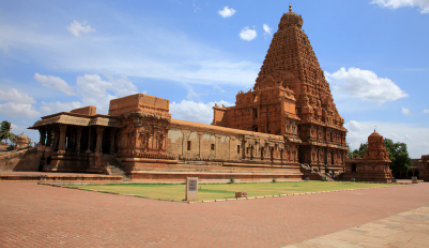
Temple Towns and Pilgrimage Centres
Thanjavur is also an example of a temple town.
Temple towns represent a very important pattern of urbanisation, the process by which cities develop.
- Temples were often central to the economy and society.
- Rulers built temples to demonstrate their devotion to various deities.
- Temples were given with grants of land and money to carry out elaborate rituals, feed pilgrims and priests and celebrate festivals.
- Pilgrims who flocked to the temples also made donations.
- Temple authorities used their wealth to finance trade and banking.
- A large number of priests, workers, artisans, traders, etc. settled near the temple to cater to its needs and those of the pilgrims.
- This is how Temple Towns developed.
Some temple towns are:
- Bhillasvamin (Bhilsa or Vidisha in Madhya Pradesh)
- Somnath in Gujarat.
- Kanchipuram and Madurai in Tamil Nadu
- Tirupati in Andhra Pradesh.
Pilgrimage centres also slowly developed into townships. Some Pilgrimage centres towns are:
- Vrindavan (Uttar Pradesh)
- Tiruvannamalai (Tamil Nadu)
- Ajmer (Rajasthan) was the capital of the Chauhan kings in the twelfth century and later became the suba headquarters under the Mughals. It also had religious significance due to Khwaja Muinuddin Chishti, the celebrated Sufi saint who settled there in the twelfth century and attracted devotees from all creeds.
- Near Ajmer is a lake, Pushkar, which has attracted pilgrims from ancient times.
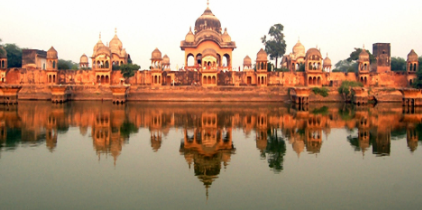
A Network of Small Towns
From the eighth century Small Towns were on the rise. These probably emerged from large villages.
They usually had a mandapika (or mandi). They also had hatta (haat) lined with shops.
Mandapika (or Mandi): Selling place where nearby villagers brought their produce to sell.
Hatta (or Haat): Hatta (or haat) were the market streets.
There were also streets for different kinds of artisans.
Some traders lived in the town, others travelled from town to town. Many came from far and near to these towns to buy local articles and sell products of distant places.
Usually a samanta or, in later times, a zamindar built a fortified palace in or near these towns.
They levied taxes on traders, artisans and articles of trade, which had been built by themselves or by rich merchants.
Traders: Big and Small
There were many kinds of traders.
Several traders, especially horse traders, formed associations, with headmen who negotiated on their behalf with warriors who bought horses.
Traders had to pass through many kingdoms and forests, they usually travelled in caravans and formed guilds to protect their interests.
One of the most famous guilds was the Manigramam and Nanadesi. These guilds traded extensively both within the peninsula and with Southeast Asia and China.
Some communities also became the principal trading groups of the country like the Chettiars and the Marwari Oswal.
Gujarati traders:
Gujarati traders, including the communities of Hindu Baniyas and Muslim Bohras, traded extensively with the ports of the
- Red Sea
- Persian Gulf
- East Africa
- Southeast Asia
- China.
They sold textiles and spices in these ports and, in exchange, brought gold and ivory from Africa; and spices, tin, Chinese blue pottery and silver from Southeast Asia and China.
The towns on the west coast were home to:
- Arab
- Persian
- Chinese
- Jewish
- Syrian Christian traders.
Indian spices and cloth sold in the Red Sea ports were purchased by Italian traders and eventually reached European markets, fetching very high profits.
Spices grown in tropical climates became an important part of European cooking, and cotton cloth was very attractive. This eventually drew European traders to India.
NCERT Solutions Class 7 History Social Science Towns, Traders And Craftspersons: Crafts in Towns
Bidri: inlay work of the craftspersons of Bidar in copper and silver were called Bidri.
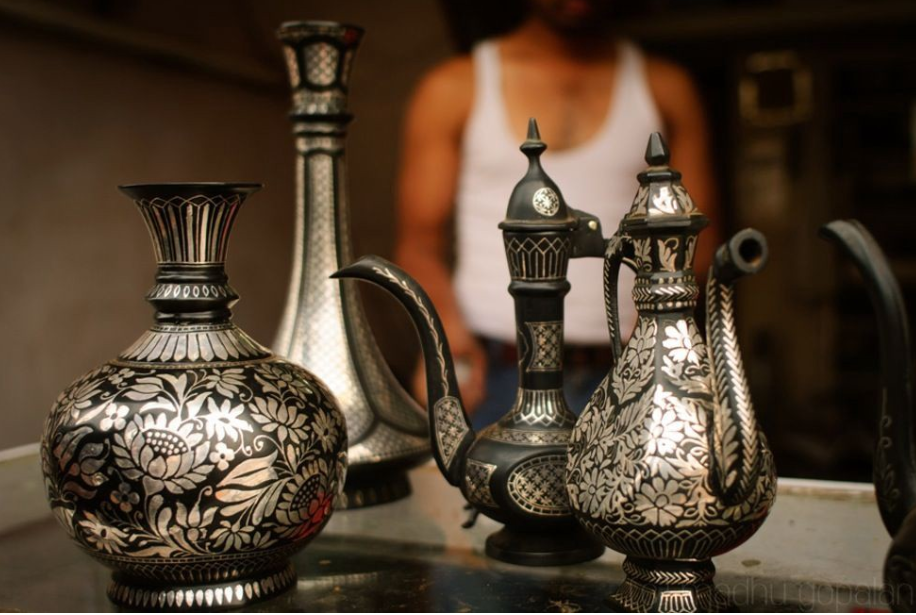
The Panchalas or Vishwakarma community, consisting of goldsmiths, bronze smiths, blacksmiths, masons and carpenters, were essential to the building of temples.
Weavers such as the Saliyar or Kaikkolars emerged as prosperous communities, making donations to temples.
Some aspects of cloth making like cotton cleaning, spinning and dyeing became specialised and independent crafts.
A Closer Look: Hampi, Masulipatnam and Surat
The Architectural Splendour of Hampi
- Located in the Krishna-Tungabhadra basin.
- Formed the nucleus of the Vijayanagara Empire, founded in 1336
- It was a well-fortified city.
- No mortar or cementing agent was used in the construction of these walls and the technique followed was to wedge them together by interlocking.
- The buildings in the royal complex had splendid arches, domes and pillared halls with niches for holding sculptures.
- They had well-planned orchards and pleasure gardens with sculptural motifs such as the lotus and corbels.
- Hampi bustled with commercial and cultural activities.
- Temples were the hub of cultural activities
- Devadasis (temple dancers) performed before the deity, royalty and masses in the many-pillared halls in the Virupaksha (a form of Shiva) temple.
- The Mahanavami festival, known today as Navaratri in the south, was one of the most important festivals celebrated at Hampi.
- Hampi fell into ruin following the defeat of Vijayanagara in 1565 by the Deccani Sultans – the rulers of Golconda, Bijapur, Ahmadnagar, Berar and Bidar.
A Gateway to the West:Surat
- Surat in Gujarat was the emporium of western trade during the Mughal period along with Cambay and Ahmedabad.
- It was the gateway for trade with West Asia via the Gulf of Ormuz.
- Surat has also been called the gate to Mecca because many pilgrim ships set sail from here.
- Surat was cosmopolitan
- People of all castes and creeds lived in Surat.
- In the seventeenth century the Portuguese, Dutch and English had their factories and warehouses at Surat.
- Surat had several retail and wholesale shops selling cotton textiles.
- The textiles of Surat were famous for their gold lace borders (zari) and had a market in West Asia, Africa and Europe.
- The state had numerous rest-houses to take care of the needs of people from all over the world who came to the city.
- There were magnificent buildings and innumerable pleasure parks.
- The Kathiawad seths or mahajans (moneychangers) had huge banking houses at Surat.
- It is noteworthy that the Surat hundis were honoured in the far-off markets of Cairo in Egypt, Basra in Iraq and Antwerp in Belgium.
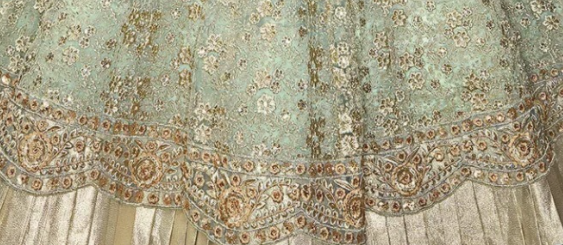
Surat began to decline towards the end of the seventeenth century.
This was because of many factors like:
- The loss of markets and productivity because of the decline of the Mughal Empire.
- Control of the sea routes by the Portuguese
- Competition from Bombay where the English East India Company shifted its headquarters in 1668.
Fishing in Troubled Waters: Masulipatnam
- Lays on the delta of the Krishna river.
- In the seventeenth century it was a centre of intense activity.
- Both the Dutch and English East India Companies attempted to control Masulipatnam
- It was the most important port on the Andhra coast
- The fort at Masulipatnam was built by the Dutch.
The Qutb Shahi rulers of Golconda imposed royal monopolies on the sale of textiles, spices and other items. They did this to prevent the trade from passing completely into the hands of the various East India Companies.
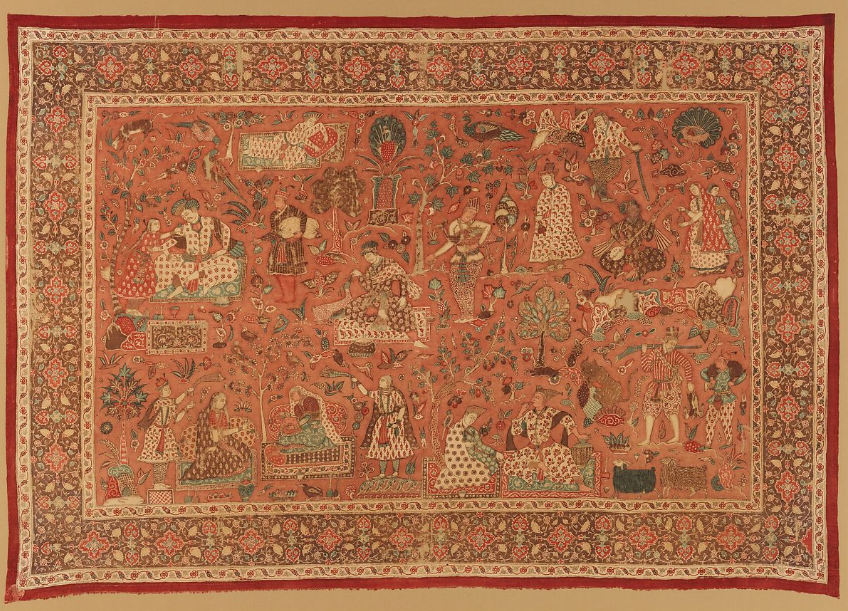
Various trading groups competition made the city populous and prosperous. Some of these trading groups were:
- the Golconda nobles
- Persian merchants
- Telugu Komati Chettis
- European traders
Mughals began to extend their power to Golconda. Mughal representative, the governor Mir Jumla who was also a merchant, began to play off the Dutch and the English against each other.
In 1686-1687 Mughal Emperor Aurangzeb annexed Golconda.
Thus European Companies looked for alternatives. It was a part of the new policy of the English East India Company that it was not enough if a port had connections with the production centres of the hinterland. The new Company trade centres, it was felt, should combine political, administrative and commercial roles.
As the Company traders moved to Bombay, Calcutta and Madras, Masulipatnam lost both its merchants and prosperity and declined in the course of the eighteenth century.
New Towns and Traders
In the sixteenth and seventeenth centuries, European countries were searching for spices and textiles.
The English, Dutch and French formed East India Companies in order to expand their commercial activities in the east. Initially great Indian traders like Mulla Abdul Ghafur and Virji Vora who owned a large number of ships competed with them. After that the European Companies used their naval power to gain control of the sea trade and forced Indian traders to work as their agents. Ultimately, the English emerged as the most successful commercial and political power in the subcontinent.
The spurt in demand for goods like textiles led to a great expansion of the crafts of spinning, weaving, bleaching, dyeing, etc.
Indian textile designs became increasingly refined.
There was also a decline of the independence of craftspersons.They now began to work on a system of advances.They did not have the liberty of selling their own cloth or weaving their own patterns. They had to reproduce the designs supplied to them by the Company agents. The eighteenth century saw the rise of Bombay, Calcutta and Madras.
Crafts and commerce underwent major changes as merchants and artisans were moved into the Black Towns. These were established by the European companies within these new cities.
The “blacks” or native traders and craftspersons were confined here while the “white” rulers occupied the superior residencies of Fort St. George in Madras or Fort St. William in Calcutta.
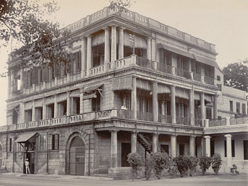
NCERT Solutions Class 7 History Social Science Towns, Traders And Craftspersons : Exercises
1. Fill in the blanks:
(a) The Rajarajeshvara temple was built in 1010 A.D.
(b) Ajmer is associated with the Sufi saint Khwaja Muinuddin Chishti.
(c) Hampi was the capital of the Vijayanagara Empire.
(d) The Dutch established a settlement at Masulipatnam in Andhra Pradesh.
2. State whether true or false:
(a) We know the name of the architect of the Rajarajeshvara temple from an inscription.
Ans. True
(b) Merchants preferred to travel individually rather than in caravans.
Ans. False
(c) Kabul was a major centre for trade in elephants.
Ans. False
(d) Surat was an important trading port on the Bay of Bengal.
Ans. False
3. How was water supplied to the city of Thanjavur?
Ans. Water was supplied to the city of Thanjavur from wells and tanks.
4. Who lived in the “Black Towns” in cities such as Madras?
Ans. Native traders and crafts persons lived in the Black Towns.
NCERT Solutions Class 7 History Social Science Towns, Traders And Craftspersons : Let’s understand
5. Why do you think towns grew around temples?
Ans. Towns grew around temples because:
- Temple towns represent a very important pattern of urbanisation, the process by which cities develop.
- Temples were often central to the economy and society.
- Rulers built temples to demonstrate their devotion to various deities.
- Temples were given with grants of land and money to carry out elaborate rituals, feed pilgrims and priests and celebrate festivals.
- Pilgrims who flocked to the temples also made donations.
- Temple authorities used their wealth to finance trade and banking.
- A large number of priests, workers, artisans, traders, etc. settled near the temple to cater to its needs and those of the pilgrims.
- This is why towns developed around temples.
6. How important were craftspersons for the building and maintenance of temples?
Ans. Craftpersons were very important for building and maintenance of temples because their work were very much needed in decorating and adorning the temple.
A large number of workers, artisans, etc. settled near the temple to cater to its needs and those of the pilgrims.
7. Why did people from distant lands visit Surat?
Ans. People from distant lands visited Surat because:
- Surat in Gujarat was the emporium of western trade during the Mughal period along with Cambay and Ahmedabad.
- It was the gateway for trade with West Asia via the Gulf of Ormuz.
- It was also the gate to Mecca because many pilgrim ships set sail from there.
- The textiles of Surat were famous for their gold lace borders (zari) and had a market in West Asia, Africa and Europe.
8. In what ways was craft production in cities like Calcutta different from that in cities like Thanjavur?
Ans. Craft production in cities like Calcutta were not independent and had to work only according to the European needs and demands. They lost their individuality.
Craft production in cities like Thanjavur focused on demands of the temples and the surrounding people.
NCERT Solutions Class 7 History Social Science Towns, Traders And Craftspersons : Conclusion
We saw in NCERT Solutions Class 7 History Social Science Towns, Traders And Craftspersons, many different people from different places were affected by the changes that the medieval India went through due to the trades. Many different countries were also impressed by India’s spices, textiles, crafts and location. Everyone wanted to gain benefit and thus everyone wanted to gain control over different places. The story of crafts and commerce in the eighteenth century will be taken up in higher classes.